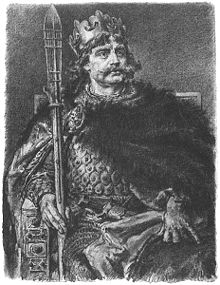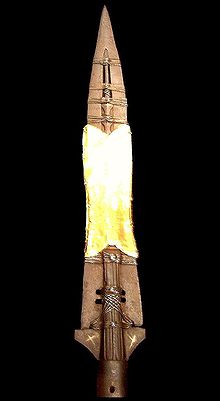This is an old revision of this page, as edited by Skäpperöd (talk | contribs) at 17:41, 26 September 2008 (m exp and clarify). The present address (URL) is a permanent link to this revision, which may differ significantly from the current revision.
Revision as of 17:41, 26 September 2008 by Skäpperöd (talk | contribs) (m exp and clarify)(diff) ← Previous revision | Latest revision (diff) | Newer revision → (diff)





The Congress of Gniezno (Template:Lang-de, Template:Lang-pl) took place on March 11 1000 and is one of the more important events in Polish history, though scholars disagree over the details of the decisions made at the meeting, especially whether the Polish prince was pledged the king's crown or not.
After his death, Adalbert of Prague was soon made a saint by the common effort of Boleslaus I of Poland and Otto III, becoming the first saint of Slavic origins. His body, bought by Boleslaus I for its weight in gold, was put into the tomb in Gniezno, contemporary capital of the Polans of later Poland.
Otto III committed to a pilgrimage to St. Adalbert's tomb in Poland in his attempt to extend the influence of Christianity in Eastern Europe, and to renew the Empire based on a federal concept ("renovatio Imperii Romanorum") with the Polan and Hungarian duchies upgraded to eastern federati of the empire. As part of this policy he also invested Saint-King Stephen the Great of Hungary with the king's crown. The Polans and Piasts Mieszko I had previously received the title and position as duke from the empire under margrave Gero and from the emperors Otto I and Otto II.
In 1000 A.D, while on the pilgrimage, Otto III invested Boleslaus I of Poland with the titles frater et cooperator Imperii ("Brother and Partner of the Empire") and populi Romani amicus et socius. On the same visit, Otto III raised Gniezno to the rank of an archbishopric. By this nomination Poland was kept separate from the bishopric of Magdeburg, the nearest German ecclesiastical province; which helped her to keep semi-independence from the Holy Roman Empire through the Middle Ages.
Three new dioceses subordinate to Gniezno were created: in Kraków, Wrocław and Kołobrzeg. St. Adalbert's brother Radzim Gaudenty became the first archbishop of Gniezno. Otto III gave Boleslaus a replica of his Holy Lance, and Boleslaus presented the Emperor with a relic, an arm of St. Adalbert in exchange.
The event was described by German chronicle writer Thietmar of Merseburg and Gallus Anonymus, the first author of Polish history.
Due to Otto's early death in 1002, his renovatio policies were not fully applied. Henry II, Otto's successor, changed the empire's policies. Boleslaw expanded his realm to the South and West interflicting with the empire's interests. As a consequence, the excellent relations between the empire and the Polan duchy marked by the Congress of Gniezno turned into a state of hostility that soon emerged into a war (1004-1018). Poland lost Pomerania, and stayed outside the empire. The Pomeranian diocese of Kołobrzeg, founded as a consequence of the Congress of Gniezno, was overthrown by the Pomeranians already in ~1007, bishop Reinbern returned to Boleslaw's court.
References
- ^ Andreas Lawaty, Hubert Orłowski, Deutsche und Polen: Geschichte, Kultur, Politik, 2003, p.24, ISBN 3406494366, 9783406494369
This Polish history–related article is a stub. You can help Misplaced Pages by expanding it. |
This German history article is a stub. You can help Misplaced Pages by expanding it. |